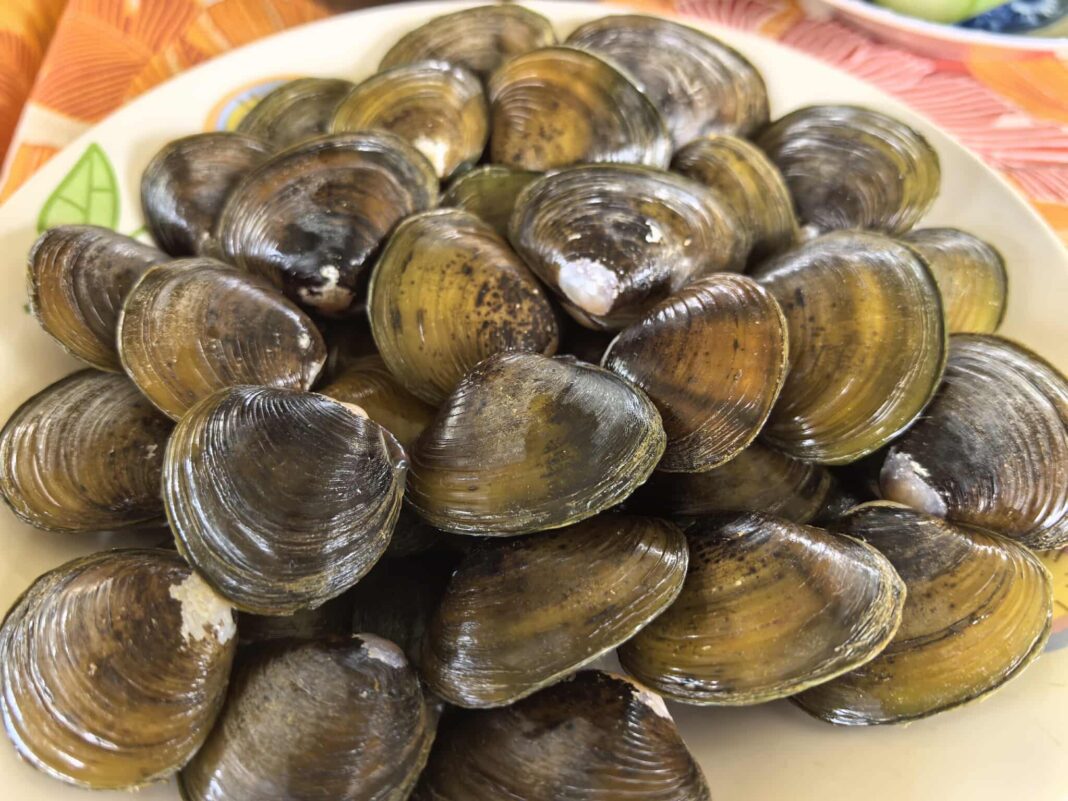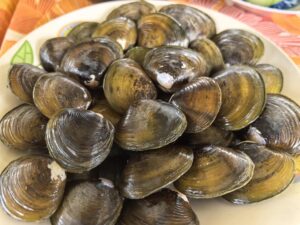
By Joel Contrivida
Sixty-seven kilometers from Puerto Princesa City lies the rural barangay of Maoyon, a northeastern town with nearly 1,392 residents, including the indigenous Batak tribes. The community, which spans 22,649 square kilometers, recently celebrated the second year of Kubile Festival from August 17 to 22. The festival honors a rare type of shell found exclusively in their rivers and highlights its versatility through a cooking contest featuring various recipes.
The Kubile, scientifically known as Anadara antiquata, is a bivalve mollusc with a hard, brownish-to-dark shell. It thrives in fresh, running water, particularly in rivers. According to Barangay Kagawad Ana Maria Saavedra, this unique shell is not native to Maoyon. Her great-grandfather brought just 10 pieces from Camarines Sur around 1950 and released them into the Babuyan River. To his surprise, the shells survived and multiplied, becoming a staple food for the community.
“Thomas Vargas Sr. came from Camarines Sur,” Saavedra said. “He and his family were among the first founders of Barangay Maoyon. I’m not sure if the shells are still found in Camarines today; he was my grandfather’s father.”
Barangay Chairman Earl Dilla stated that the University of the Philippines-Los Baños previously conducted a study on why the Kubile thrives in Maoyon’s rivers. However, the barangay does not have a copy of the old research. “They studied why the Kubile is only found here,” Dilla said. “We weren’t furnished a copy of the results. They mentioned brackish water, but other places have brackish water and no Kubile. As of now, the origin of how it came to exist only in our river is still unknown.”
While there are claims that the Kubile can be found in other Palawan towns like Narra and Roxas, Maoyon residents believe their variety has a distinctly different look and more palatable taste. To protect their unique shell, Dilla’s administration passed an ordinance declaring Maoyon as the “Kubile Capital” of Palawan. The City Council supported the ordinance in July 2024, designating Maoyon as the sole venue for the festival, which is celebrated annually during the third week of August in line with the barangay’s foundation anniversary. This year, they celebrated their 65th anniversary.
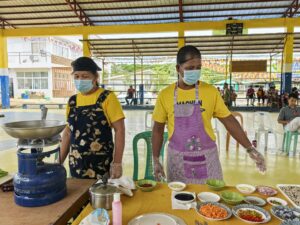
Cooking Kubile
When it comes to cooking Kubile, the locals have their favorite. According to Saavedra, the best way to prepare this oyster-like delicacy is as an Adobo with coconut milk—a recipe that has been enjoyed by generations. However, the younger residents are adding their own creative twists, and a wide variety of new recipes are now being enjoyed. Saavedra notes that the shells are perfectly safe to eat, with no recorded incidents of food poisoning or death. The annual cooking contest gives contestants the freedom to experiment. This year’s competition saw four Purok showcasing their culinary skills. The champion was Purok Centro, which won the P5,000 prize for their innovative Kubile Bopis. Other delicious contenders included Kubile Curry, Curry with Turmeric (Luyang Dilaw), and Creamy Salted Egg Kubile.

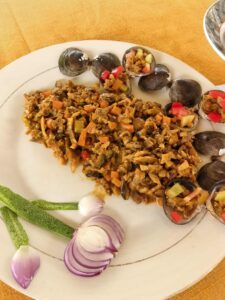
Conserving the Kubile
During the pandemic, the Kubile served as a vital food source for Maoyon residents. Even with its current abundance, the community has taken steps to conserve it. Facing threats from year-round harvesting and sand and gravel quarries, the barangay passed a resolution to create a Kubile sanctuary in certain parts of their rivers. This area is strictly off-limits to harvesting, ensuring that larger shells, which reproduce more, are preserved.
“We have taken some preventive measures,” Dilla said. “We passed an ordinance declaring a certain area as a sanctuary. It doesn’t prohibit harvesting at certain months, but the sanctuary area is off-limits. It has been harvested since 1963, and there are still many to be found.”
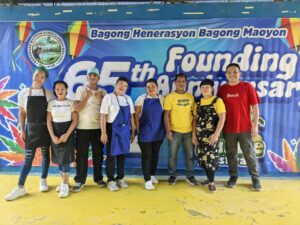
A New Delicacy for Puerto Princesa
The people of Maoyon dream of making the Kubile a signature delicacy for visitors to Puerto Princesa. Tourists often ask what local foods to try, and the common answers—Cuyonon dishes, cashew fruits, and danggit (dried rabbitfish)—are often associated with other parts of the province or adapted from other places.
“We hope this is the answer,” Dilla said. “We pushed for this festival so it can be known and attract people, so that others will know that Puerto Princesa also has something to be proud of—and that is this delicacy.”


